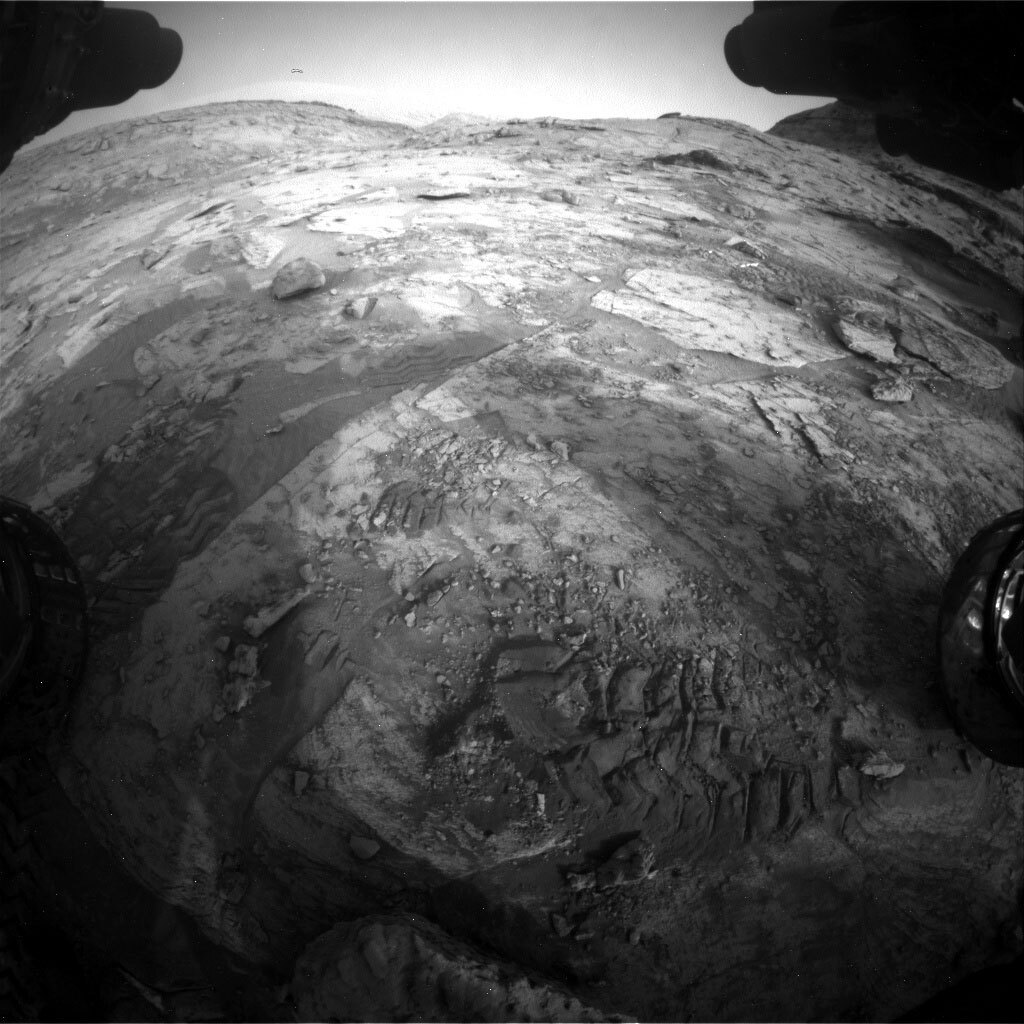2 min read

We continue to characterize “The Prow,” which stands proud above nearby flat lying dust coated bedrock. Our sedimentologists are very keen to get grain size measurements, as this can give very valuable insights into conditions at the time the sediments were laid down. A change in grain size can show that we have changing conditions over time, so getting MAHLI on rocks here is the highest priority so that we can get a solid measurement of grain size.
Unfortunately, the underlying bedrock is very dusty making grain size identification difficult and, as Susanne told us in the last blog, getting Curiosity up close to The Prow is proving very difficult. However, we have had a couple of lucky breaks … literally! The GEO team has identified a float block “Toron,” which broke off The Prow but whose original location up on The Prow can be identified. In today’s plan we will drive to this block, which was analyzed by ChemCam earlier in the week, and will hopefully be in a position to analyze grain size for The Prow.
We were able to find a brushable target “Suapi” in our current workspace, so we can clear dust and analyze with MAHLI and APXS. Additionally, the rover wheels broke apart some bedrock as we drove to our current workspace, so we are getting a six image MAHLI mosaic on the freshly exposed “The Test” bedrock target. ChemCam are analyzing the targets “Sororopan” and “Parime” in the underlying bedrock, “Yuruani” up on The Prow and “Paikwa” on the Toron block we will be aiming for in our weekend drive.
We complement the geological analysis with a full suite of atmospheric measurements, monitoring dust content in the atmosphere and looking for dust devils on the horizon.
Written by Catherine O'Connell-Cooper, Planetary Geologist at University of New Brunswick







